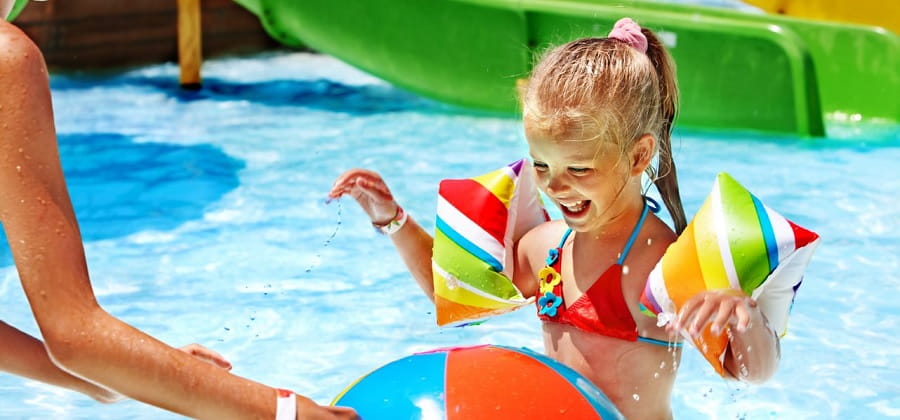
What are swimming and flotation aids?
Swimming and flotation aids (“floaties”) aim to help to keep children afloat so they can become confident in the water. There are a variety of styles available, including full-body suits, vests, armbands, rings or seats. Floaties are not a substitute for closely watching children and should always be used under constant adult supervision.
What are some risks associated with using floaties?
Floaties can help to build confidence in the water but they are NOT a lifesaving device. An over-reliance on floaties can lead to a false sense of security for both parents and children and not provide a true picture of a child’s swimming ability. You may have seen children leaping confidently into deep water while wearing a flotation aid, yet be unable to swim if the product is removed.
Some floaties can hold children in an unnatural vertical stance in the water and impede their arm movements and body rotation. This can lead to the development of inappropriate movements and bad habits which don’t support their acquisition of swimming skills.
Other dangers that may occur include:
- Floaties slipping off or being removed by children in the water
- Ill-fitting products may ride up or cover a child’s face
- Inflatable products deflating or popping
- Kids tipping face-first into water while their body remains floating
How can I choose the best product for my child?
When choosing flotation aids, ensure the product is suitable for your child’s age and weight and fits snugly. Consider an appropriate design, size and fit that matches your child’s development and current swimming ability. Some vests and suits have adjustable foam floats which can be removed as their skills develop.
Flotation aids should meet the Australian mandatory standard. This regulates various aspects of the product’s construction, materials and required safety warnings.
How can I use floaties safely with my child?
Do not rely upon floaties to keep your child safe and protect them from drowning. Always use floaties under constant adult supervision. You should be in the water, actively interacting with your child within arm’s reach so you can respond quickly if anything goes wrong.
If you choose to use floaties, ensure your child also spends time swimming without them so they don’t become too reliant on the extra buoyancy provided. This will help you both to develop a more realistic picture of their abilities and limitations.
Follow all manufacturer warnings and instructions for use.
Regularly check products for any holes, leaks or other damage.
Store floaties and pool toys out of sight and reach of children and don’t leave them around the pool when not in use. Items which are left out may attract the attention of children and entice them to try to enter the pool area.